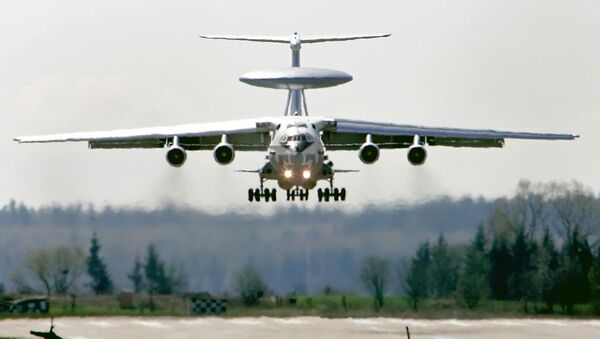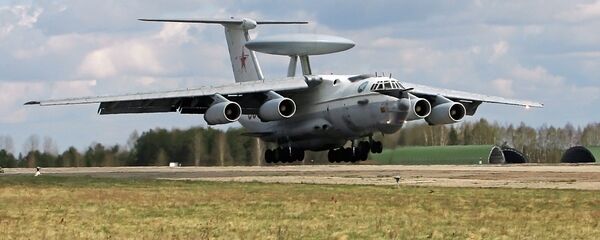The A-100 airborne early warning and control (AWACS) plane also uses onboard electronics to jam enemy radar and communications and this is where it differs from its US counterpart.
“The American AWACS’ radio-electronic warfare station used to hamper the work of its own radar and was subject to interference from its onboard surveillance stations, which is why they eventually gave up on them which made their AWACS less effective and more vulnerable too,” defense expert Alexei Leonkov told the newspaper.
America’s fifth generation F-22 Raptors can’t do without AWACS support. To stay invisible, they attack with their radar switched off, relying entirely on targeting data provided by the “flying eye,” that has to fly within 400 kilometers of the combat area. Having no means of electronic “camouflage” the “flying radar” may fall easy prey to enemy air defense weapons, above all Russia’s S-400’s long-range missiles.
The A-100’s maiden flight to stress-test all its systems in the air is slated for March of next year. If everything goes well, the “flying radar” will become operational in 2018.
The plane is built around a multilateration radar unit featuring a pair of phased-array antennas capable of detecting enemy fighter planes at a distance of up to 600 kilometers and surface ships up to 400 kilometers away.
“The A-100 is a classified project, but I believe they may be using compact UHF elements working both as receivers and transmitters. This will notably increase the radar’s range and accuracy. All our interceptors and air defenders will need is fire their missiles and forget,” Leonkov added.
The A-100, already nicknamed “a flying mushroom” due to the distinctive rotating radar dome above the fuselage, is an upgrade of its A-50 predecessor that first flew in 1978 and entered service in 1984.



